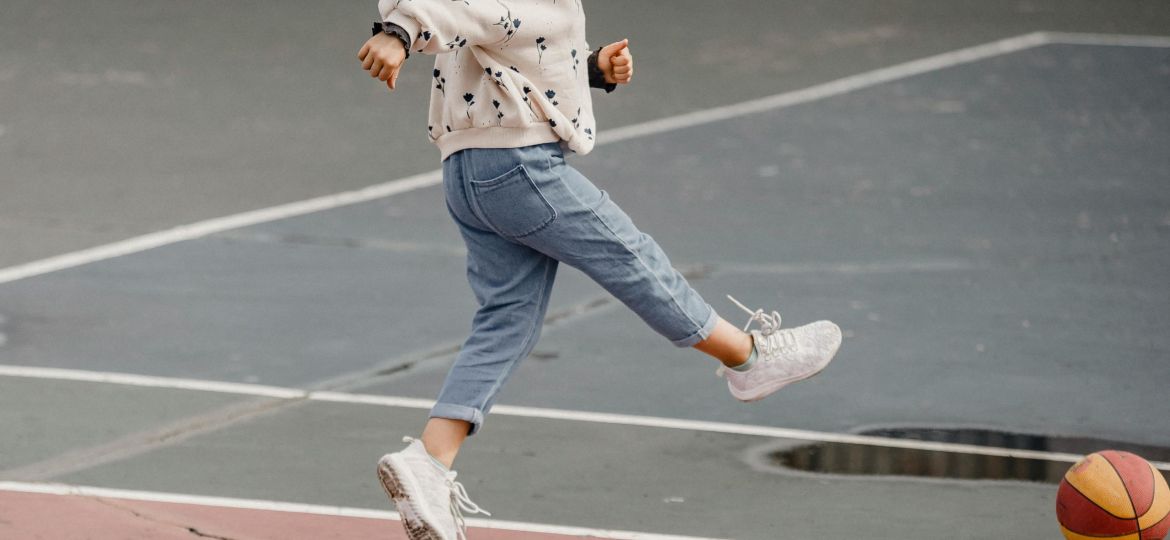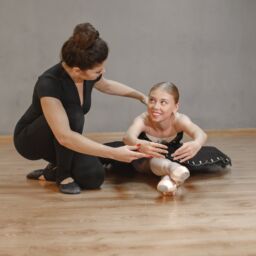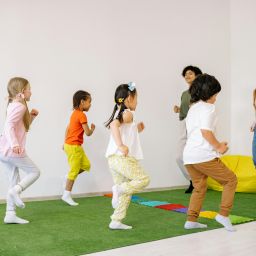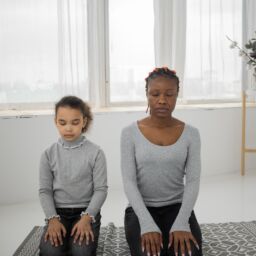
FH Summary: The blog post from First Habits explores the transformative power of visualization in child development, where children learn to “see” their success before engaging in tasks, enhancing their mind-muscle connection and fostering an upward spiral of growth. It delves into scientific research supporting the efficacy of mental practice and provides a comprehensive guide for parents to integrate visualization into their children’s daily routines. By embracing these practices, parents can help their children develop not only motor skills and cognitive abilities but also emotional resilience, laying the groundwork for lifelong success.
In this post, we at First Habits aim to provide parents with a comprehensive guide to nurturing their children’s growth through the power of habit formation, visualization and building a connection between your child’s mind and their physical movements (aka their muscles). By understanding and applying the concept of mind-muscle connection, parents can foster an environment that supports an upward spiral in their children’s development.
The Scientific Symphony of Mind and Muscles
The bond between the mind and body is a subject of great interest to neuroscientists and psychologists alike. Detailed research illustrates that mental practices are almost as effective as true physical practice,1 and that doing both is more effective than either alone. This fascinating interplay is what we encourage at First Habits – a balanced act of envisioning and doing.
So what are the specifics of mind-muscle connection? “Mind-muscle connection is a psychological aspect of training in which you focus on feeling each and every rep and recruiting specific muscles. It is about more than just going through the motions of each movement, but rather, focusing on a conscious and deliberate muscular contraction. This mental focus can increase the recruitment of muscle fibers during an exercise and make it easier to isolate specific muscles. With this method, you make every rep count.”
While that may seem like a exercise-focused explanation, the importance of a mind-muscle connection extends to children learning physical activities is profound. It’s about harnessing their natural ability to concentrate and connect thought to movement. By focusing on the muscle and movement they are learning, whether it’s a dance step, a swim stroke, or a soccer kick, children can enhance their neuromuscular coordination. This focused practice helps in better execution of the activity, quicker learning, and a more meaningful engagement with the sport or exercise they are participating in.
Detailed Dive: Visualizing Success in Action
Let’s delve deeper into visualization. Imagine teaching your child to play piano. Before they even touch the keys, they sit, close their eyes, and imagine their fingers moving across the keyboard, hearing the melody in their mind. This kind of mental rehearsal can significantly enhance their learning curve and performance.
Extending the Story: The Long-Term Effects of Visualization on Emma and Liam
Continuing with a story, Liam’s success in visualizing mathematical prowess led to an interest in science. He began visualizing complex experiments and their outcomes, which in turn helped him excel in his science fair projects. Emma, meanwhile, found that visualization improved her sports performance; she imagined scoring goals in soccer, which translated to better on-field tactics and confidence.
Comprehensive Steps to Enculturate Visualization into Your Child’s Daily Life
Progressive Relaxation: The Foundation for Clear Visualization
Teach your child to relax their body progressively, releasing tension from head to toe. This relaxation serves as the prelude to effective visualization exercises.
Mindful Breathing: The Anchor for Focus
Introduce deep, mindful breathing techniques before starting visualization practices. This helps to anchor their focus and clear their mind for vivid imagery.
Detailed Scripting: The Blueprint for Success
Help your child create detailed scripts of the actions they want to visualize. This includes the environment, the actions, the emotions, and the sensations associated with success.
Consistent Cueing: The Trigger for Routine Visualization
Establish a consistent cue, such as a bell or a specific time of day, to signal the start of a visualization routine. This helps to form the habit of regular mental practice.
Sensory Integration: The Multi-Dimensional Approach
Encourage the incorporation of all senses into the visualization process. Ask them what they see, hear, feel, and even smell or taste as they engage in their mental rehearsal.
Focused Practice: The Art of Mind-Muscle Connection in Action
Reinforce with your child the practice of thinking of their own muscles movements while they are performing a physical activity. Encourage them to not only think about the activity itself, but how each specific muscle moves during each part of the activity.
Role Models and Mentors: The Real-Life Inspiration
Connect your child with role models or mentors who have successfully used visualization in their pursuits. This human connection can provide practical insights and inspiration.
Expanding the Impact: First Habits in Educational and Social Contexts
These visualization techniques can also be applied to educational settings, where teachers can integrate First Habits into the curriculum, encouraging students to envision academic success before exams or classroom presentations. Similarly, in social contexts, children can visualize positive interactions with peers, thereby building confidence and social skills.
Going Beyond the Basics: First Habits for Emotional Resilience
We recognize the importance of emotional development as part of the upward spiral. Children can use visualization to manage emotions, such as picturing themselves in a calm state when faced with anxiety or stress. This form of emotional rehearsal can prepare them to handle life’s ups and downs with greater resilience.
Joining Forces with First Habits: Your Invitation to a Supportive Community
As we expand our narrative and guide you through more nuanced practices, we invite you to become an active part of the First Habits community. By subscribing to our resources, you gain access to a wealth of knowledge and support, ensuring that you’re not alone on this journey of cultivating your child’s potential.
Conclusion: Visionary Habits for a Lifetime of Success
In sum, First Habits are not just about the immediate benefits they bring to children’s development. They are about planting seeds for a future where your children are equipped with the skills, confidence, and emotional intelligence to succeed in all areas of life. By instilling these habits early on, you are setting the stage for a lifetime of achievements.
We envision a world where every child is empowered to see and therefore believe in their potential. Join us at First Habits to raise a generation that is not only skilled and knowledgeable but also visionary in their approach to life’s challenges and opportunities.
At First Habits, we believe in the power of seeing to achieve. Let’s embark on this enlightening journey together, for in the words of the wise, “The only limit to our realization of tomorrow will be our doubts of today.” Let those doubts dissipate as we nurture the habit of mind-muscle connection in our children.
References:
1 Ranganathan, Vinoth K., et al. “From mental power to muscle power–gaining strength by using the mind” Neuropsychologia






